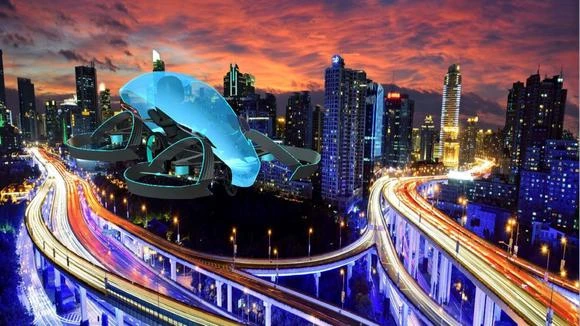Toyota Funds Flying Car Project

Artist’s impression of the Skydrive. Image courtesy of Cartivator.
“Where are all the flying cars?” Those who are either old enough to remember the old movies or retro buffs raise this question from time to time when they look at the technology of the early 21st century (i.e. now). The rest of us shrug our shoulders and may have the attitude that smartphones and the internet – something barely imagined by the majority of sci-fi writers of the 1950s–1970s* – are a fair substitute.
However, not all of us have been shrugging. Earlier today, Toyota announced that it would be backing a project that aims to develop a flying car. The team working on the flying car project, known as Cartivator, is made up of about 30 people who have been working on it for fun with a bit of crowdsourcing help so far. These 30 include several of Toyota’s up-and-coming employees, plus experts in the area of drones and video games.
Their aim is to have a workable flying car up and running in time for the 2020 Tokyo Olympics, with a manned flight of the prototype as the goal for 2018. According to the official Cartivator timeline of goals, the idea is to have a Skydrive flying car buzz in to light the flame of the Olympic torch during the 2020 Olympic Games opening ceremony. The 40 million Yen funding boost from Toyota should help to make this possible. Photos provided by Nikkei Asian Review (which ran the story before it got to the Toyota Australia newsroom) show the team having fun with the current prototype. From the looks of the photo, it seems as though the flying car –sensibly enough – will be ditching fossil fuels and will rely on electrical power into the bargain.

Toyota is not alone in showing interest in flying cars. Alongside driverless vehicles and long-range electrical vehicles, flying cars are The Next Big Thing. Airbus (the aircraft manufacturers) are rumoured to have test flights scheduled for later this year, the co-founder of Google has backed yet another flying car project and Uber is hoping to get flying taxis off the ground by 2020 as well. Literally.
The possible reality of flying cars awakens two responses. On the one hand, what fun! Let’s get rid of congestion on the roads by going off the roads altogether. Let’s cut down traffic accidents by giving people a third dimension to move in, giving them more room to dodge. Let’s cut down commute times by getting from A to B as the crow flies rather than round the block. And let’s make the dreams of all the sci-fi enthusiasts come true.
On the other hand, what a nightmare! Can you imagine the new laws and restrictions needed? What about the process of getting a licence? Won’t accidents become more serious if a collision with a flock of birds means a fall from goodness knows how high? If there are more people buzzing around in flying cars because congestion isn’t a problem, where will they park the flying cars at the other end of the commute? And what about privacy – will I still be able to skinny-dip in the well-screened backyard pool or sunbathe in the nick in my garden without some Peeping Tom in a flying car buzzing overhead?
The combination of excitement, worry and lots of questions always accompany new technologies. Funny to think that about 100 or so years ago, cars had to be preceded by a person holding a red flag, and that 200 or so years ago, experts worried that steam trains would go so fast that passengers would asphyxiate. I have no wish to add myself to the list of naysayers who got it badly wrong and have this article laughed at in about 50 years’ time.
More details about the Cartivator Skydrive that Toyota is backing can be found at their official website, http://cartivator.com/, which does have some English text, although you’ll get more out of it if you are able to understand Japanese.
If this project gets off the ground and really takes off (some puns are irresistible), would you ride in, drive or buy a flying car? Why or why not? Tell us what you think.
Safe and happy driving on the roads while we can,
Megan
*Some early sci-fi has hints of things that are similar to the internet, such as the “Pragmatometer” of C.S. Lewis’s That Hideous Strength, which posts reports by different committees to pre-assigned slots and has coloured links between related topics. Marvin the Paranoid Android from Douglas Adams’s Hitchhikers’ Guide to the Galaxy who/which has a “brain the size of a planet” and an endless source of information but is used for trivial tasks could be another hint. If you know of any other hints of the internet in early sci-fi, please leave a comment!